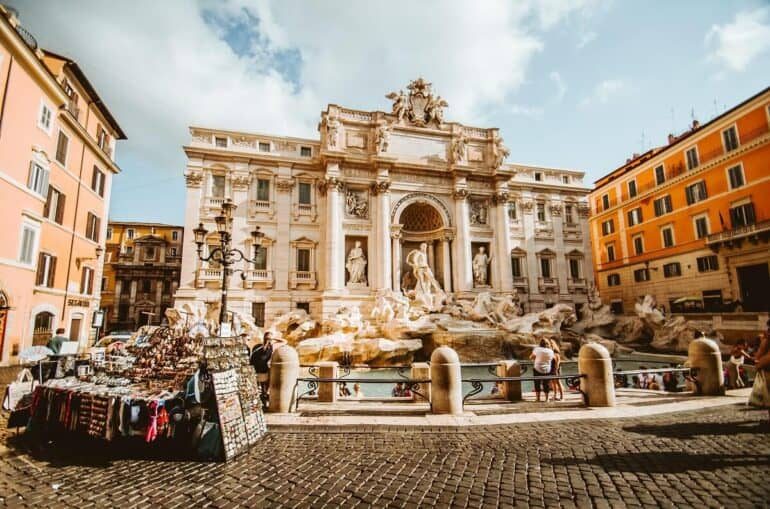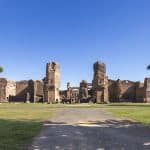All you need to know about Rome’s Trevi Fountain
Ah, the Trevi Fountain. It’s hard to think of Rome without its glorious stone facade coming to mind. It’s an icon of Roman history and pop culture through the likes of Federico Fellini’s La Dolce Vita, the 2003 Lizzie McGuire Movie, and the 2016 Fendi fashion show that featured the fountain as a backdrop. You may be familiar with the Trevi Fountain (maybe you’ve even seen it in person and tossed a coin into its aquamarine waters), but how much do you really know about it?
Read on to learn 10 interesting things you probably didn’t know about the Trevi Fountain.
1. The Trevi fountain replaced a smaller, simpler fountain in the same location
In the 15th Century, there was a small fountain located where the Trevi Fountain is today. According to writer Rhonda Krause for Travel Yes Please, in 1632, Pope Urban VIII decided the fountain “lacked drama,” and had it demolished. In 1732, Pope Clement XII held an extensive design contest to find the designer of the next Trevi Fountain. After a small conflict (more on that below), Roman architect Nicola Salvi’s design plans won and Salvi was commissioned to be the official designer
2. Nicola Salvi was not the original designer of the Trevi Fountain
The true winner of Pope Clement XII’s contest was Alessandro Galilei, an architect from Florence. Romans threw a fit, upset that a Roman architect had not been chosen for the job. “To silence the outcry,” writes Krause, “the second-place contestant, Nicola Salvi, was awarded the commission.” The Trevi Fountain has become Salvi’s legacy–it is most certainly his largest and most famous work. But unfortunately for Salvi, he never got to see the finished product.
3. The Trevi Fountain took around 30 years to complete, and the original designer died before its official inauguration
Though Salvi won the design competition in 1732, the construction of the new fountain proved to be a long and arduous process. After almost two decades of working on the fountain, Salvi passed away in 1751. According to Italy on This Day, Salvi developed severe bronchial problems from working in the tunnels of the Acqua Vergine aqueduct, which ultimately led to his death. He passed away in his home at the age of 53. It would be another 11 years before the fountain’s official inauguration in 1762. The fountain was completed by Giuseppe Pannini, who made minor alterations to Salvi’s vision of the fountain.
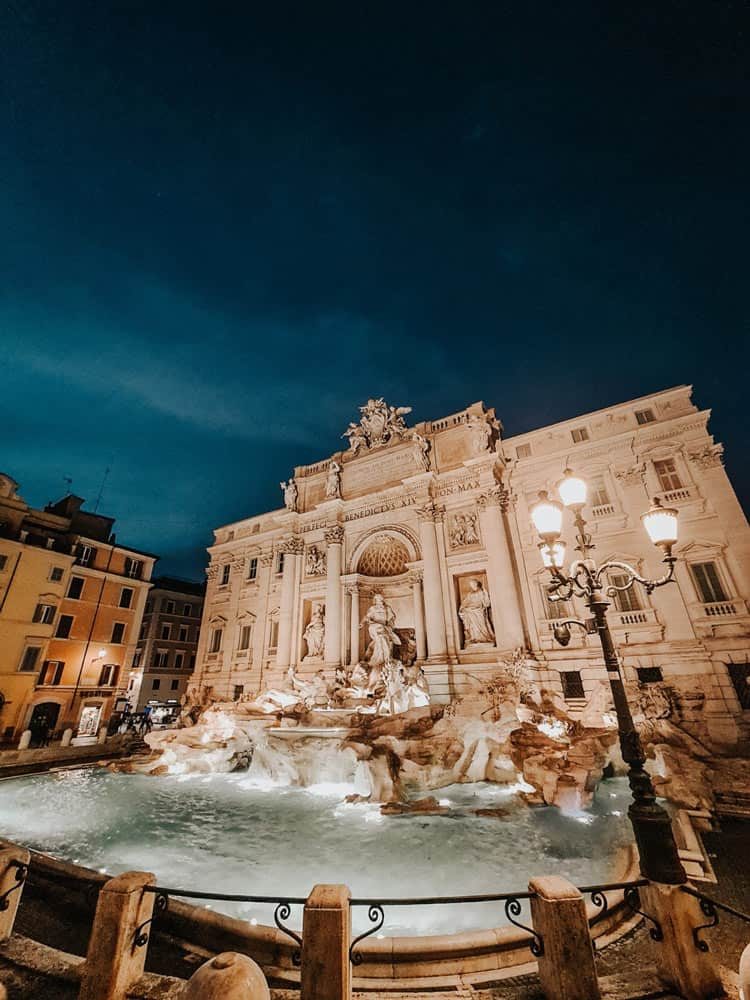
4. The Trevi Fountain is a major water supplier to other fountains
Around eighty million liters of water flow through the Trevi Fountain on a daily basis, and, as we say in the United States, “not for nothing!” The water that funnels through the Trevi Fountain cycles through Fontana dei Quattro Fiumi in Piazza Navona, Fontana della Barcaccia near the Spanish Steps, and Fontana delle Tartarughe in Piazza Mattei.
INSPIRATION
The Most Beautiful Fountains in Rome
5. You have to throw two coins in the Trevi Fountain to find love
Likely due to romantic associations like La Dolce Vita and the sheer number of coins thrown into the Trevi Fountain each day, some tourists have the misconception that a coin thrown in the fountain is a wish for true love. In fact, as legend has it, a single coin thrown into the fountain ensures your return to Rome. For love, a person must throw a second coin into the fountain after the first. You can also throw a third coin to wish for marriage–but be careful, according to the Contented Traveler, some people believe that two coins bring marriage but three bring divorce.
To make a wish in the Trevi Fountain, stand with your back to the fountain and use your right hand to throw the coin over your left shoulder.
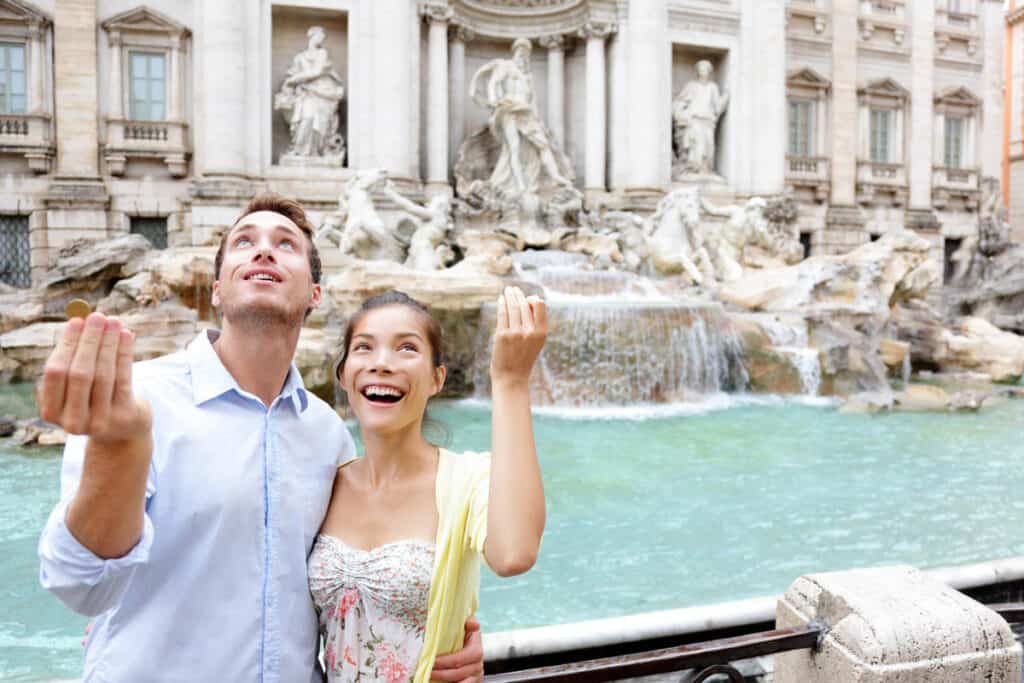
6. The coins thrown in the Trevi Fountain are donated to charity
Whether or not the coins thrown in the Trevi Fountain hold any wish-granting powers, they are undeniably helpful. The coins collected in the Trevi Fountain (which amounted to up to 1.5 million euro per year before the pandemic, according to ANSA), are donated to Caritas, a Catholic charity that supports the underprivileged and homeless. For example, one of the things Caritas has done with the Trevi Fountain money in the past is to fund a grocery program that helps Rome’s underprivileged population get free food.
7. The Trevi Fountain used to be a source of drinking water
The water that flows through the Trevi Fountain is from Acqua Vergine, a cherished aqueduct in Rome. Acqua Vergine, restored during the Renaissance Period, is the updated version of Aqua Virgo, one of the most active aqueducts in ancient Rome. According to Britannica, the water from Acqua Vergine used to offer the highest quality water in Rome. “[It was] long was considered Rome’s softest and best tasting,” writes the Britannica editorial team. The Vatican used to have its water imported from Acqua Vergine in barrels. As a public fountain, the Trevi Fountain used to be a major source of potable water from Acqua Vergine. Today, the water that flows through the Trevi Fountain is recycled to avoid waste, therefore making it non-potable. Acqua Vergine continues to supply many potable sources in Rome, such as public drinking fountains.
8. The symbolism of the Trevi fountain
The facade of the Trevi Fountain is one of the most recognizable icons in Rome, but the story behind the symbolism is lesser-known. As legend has it, a young girl led Roman general Agrippa and his soldiers to a spring when they were desperately thirsty. Agrippa ordered an aqueduct to be built from the spring, and today we have Acqua Vergine and the water that flows through the Trevi Fountain. This story is depicted in the two reliefs on the front of the fountain. As for the scene in the middle of the fountain, the protagonist is Oceanus, the Titan god of the earth’s water. Below him, men struggle with two horses: one tame and one wild. The horses represent the contrasting behaviors of the ocean. The two women on either side of Oceanus represent Abundance and Health. The top of the fountain features two angels supporting the Papal Coat of Arms.
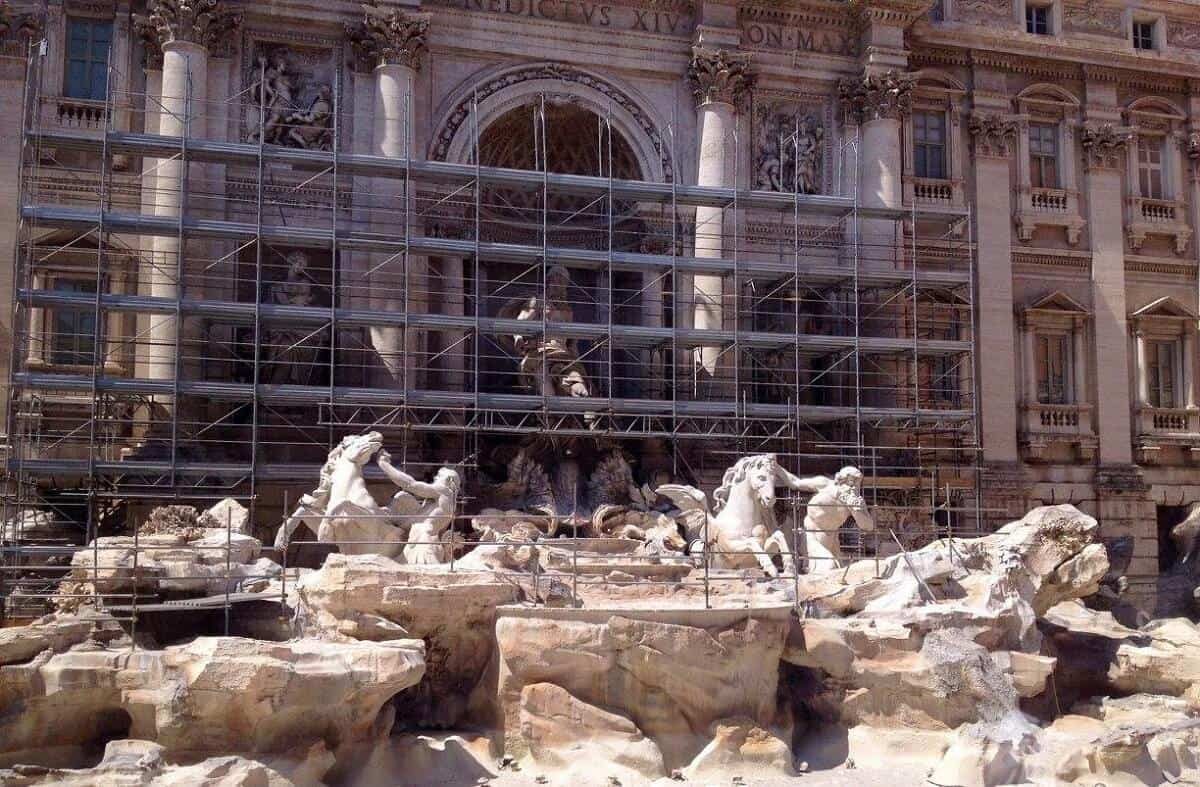
9. Fendi renovated the Trevi Fountain to save it from collapse
In June of 2012, bits of the Trevi Fountain began to crumble and fall to the ground. The city of Rome had been struggling financially and was unable to give the fountain the proper attention it needed, but the extent of the neglect became clear when the fountain started to collapse. Karl Lagerfeld, former creative director of fashion brand Fendi, stepped forward with a pledge to restore the fountain to its former glory. It was both a gesture of goodwill and a business-savvy move–Fendi’s name was featured on construction materials at the Trevi Fountain from 2012 to 2015, while restorations took place, and a plaque dedicated to the company remained on site for four years after the project was completed. The total cost of the project was around 2.2 million euro. When the Trevi Fountain was reopened in November 2015, it had new water pumps, a “pigeon deterrent system,” and an LED lighting system.
During the fountain’s reconstruction, tourists in Rome didn’t get the idealized Trevi Fountain experience–the fountain was drained and covered in scaffolding. No matter, they could still partake in the coin-throwing tradition. A small bowl of water was set near the fountain to collect the coins and wishes of tourists with good aim.
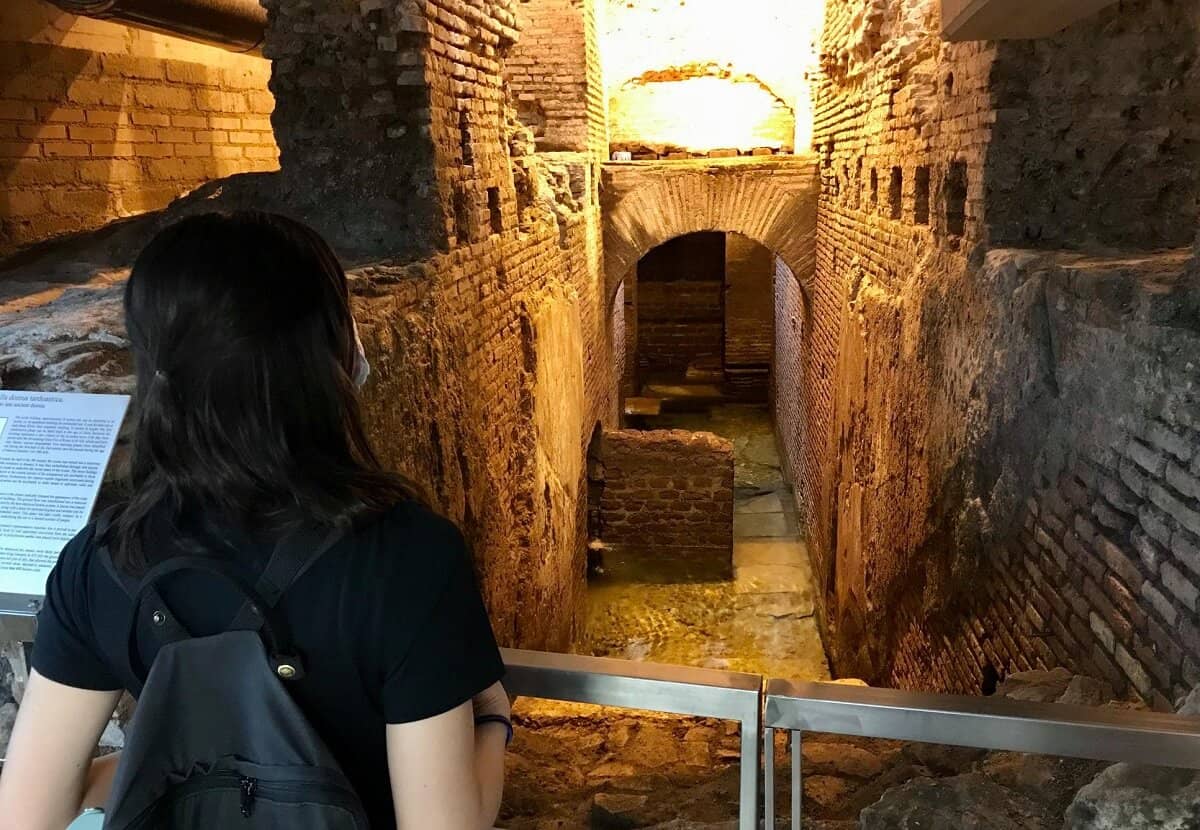
10. There’s an ancient Roman apartment complex under the Trevi Fountain–and you can visit it
Most tourists check the Trevi Fountain off of their to-do list after throwing a coin or three into its waters–but did you know you can go underneath it? There is an ancient upper-class apartment complex below the fountain that sprawls through 350 square meters of the Trevi district. The apartment complex, called Vicus Caprarius or “the City of Water,” was discovered in 1999 through routine archaeological surveys carried out for the renovation of Cinema Trevi. Today, tourists can tour the complex and see hundreds of remarkable artifacts discovered at the site, such as ancient African oil-transporting pots, mosaic tiles, marbles, figurines, and Roman coins. Another remarkable aspect of the site is that water from Acqua Vergine runs through it–the same water once used by the upper-class residents of the complex.
Book the Trevi Fountain and Underground Guided Tour to uncover its hidden mysteries, learn fascinating lesser-known facts, and explore the remarkable archaeological site beneath the iconic fountain.
INSPIRATION
Three Under The Radar Ancient Sites In Rome


